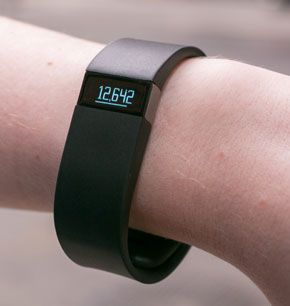Trending: Wearables and Invisibles
I can’t help imagining the cocktail party of 2018 as a scene from one of those a low-budget sci-fi film aired late at night. Imagine: A living room packed with people too busy to chat with each other as they balance their drinks with one hand and monitor their sleeves of devices and smartphones with the other - emailing, texting checking their wearable ECGs (electrocardiograms); glucose monitors and even insulin pumps.

I can’t help imagining the cocktail party of 2018 as a scene from one of those a low-budget sci-fi film aired late at night. Imagine: A living room packed with people too busy to chat with each other as they balance their drinks with one hand and monitor their sleeves of devices and smartphones with the other - emailing, texting checking their wearable ECGs (electrocardiograms); glucose monitors and even insulin pumps.
A new report by Juniper Research, Smart Health & Fitness Wearables: Device Strategies, Trends & Forecasts 2014-2019, found that fitness wearables in-use will almost treble by 2018, compared to an estimated 19 million in-use devices this year. Sam Smith of Juniper Research said that fitness devices are expected to remain the dominant wearable segment, driven by intuitive use cases and lower retail prices. However, beyond 2018, the broader appeal of smart watches will mean that they will be used more frequently in later years.”
Market
The development and utilization of Smart Watches by healthcare professionals in other areas is also ready to take off, but is hampered lack of regulatory guidelines.
The report divides the fitness wearables into two categories - the basic like the $13 Xiaomi MiBand. And the more complex devices, such as the Fitbit Surge, Microsoft Band and Samsung Gear Fit, which are fully loaded and offer features beyond fitness that include music like the MetaWatch M1 and Martian Notifier. However, more aesthetically-minded consumers will still choose watches, as fitness-focused devices will prioritize function over form.
The report also predicts Fitbit will continue to dominate the market for fitness tracking, but concedes that the big unknown is the impact and short-term effect of market share in the aftermath of the company’s decision to turn down integration with Apple Health.
Smith says “while engagement is a key pain point for fitness wearables, start-up GOQii is pioneering a new service-based business model, offering contact with fitness coaches alongside their device.”
Invisibles not wearables?
May be the engagement bugaboo can be solved by replacing wearables with invisibles. May be wearables are already passé, so …well, 2018? In a speech last October at the 8th Annual USC Body Computing Conference and reposted in Fast Company, Stuart Karten (a principal of Karten Design) said the recent introduction of the Apple HealthKit has put digital technology in the spotlight.
“It is on the verge of disrupting medicine in profound ways,” said Karten. While he concedes that wearable technology and mobile phones are an important element in addressing critical needs that health care faces - fewer nurses, expensive readmissions, and age-old inefficiencies - implantable, microscopic sensor technology have the potential capacity to change our fundamental relationship with technology.
“Advancing sensor technology has already started to create an entirely new market: invisibles. Invisibles will create a world in which we don’t see technology or sensors; they are seamlessly integrated into the human body,” said Karten.
Wearables - too much work?
All that bothersome monitoring, putting on and taking off of wearables, Kartan said takes away the type of continuous monitoring that creates intelligent and actionable data. ”The current state of wearables is an important step toward something better and bigger,” said Kartan.
Imagine now that same cocktail party in the sci-fi movie of the future. The room is packed but people are listening to the ambient music being piped in over hidden speakers; they can hear the lovely sounds of the snap, crackle and pop of the logs burning in the fireplace, and guess what? Not a device is in sight. OK, so maybe people still aren’t talking to one another (presumably they are engaged by the compelling receiving and disseminating information via their implants) at least they are looking into one another’s eyes.
“Invisibles will create a world in which we don’t see technology or sensors; they are seamlessly integrated into the human body. We won’t worry about slick aluminum, glass, or steel. Technology will become human. We will return to ourselves,” said Karten.
Well, partly, maybe.
Addressing Disparities in Psoriasis Trials: Takeda's Strategies for Inclusivity in Clinical Research
April 14th 2025LaShell Robinson, Head of Global Feasibility and Trial Equity at Takeda, speaks about the company's strategies to engage patients in underrepresented populations in its phase III psoriasis trials.
Beyond the Prescription: Pharma's Role in Digital Health Conversations
April 1st 2025Join us for an insightful conversation with Jennifer Harakal, Head of Regulatory Affairs at Canopy Life Sciences, as we unpack the evolving intersection of social media and healthcare decisions. Discover how pharmaceutical companies can navigate regulatory challenges while meaningfully engaging with consumers in digital spaces. Jennifer shares expert strategies for responsible marketing, working with influencers, and creating educational content that bridges the gap between patients and healthcare providers. A must-listen for pharma marketers looking to build trust and compliance in today's social media landscape.